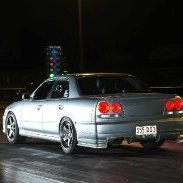throttle lag wit hFMIC?
Announcements
-
Similar Content
-
Latest Posts
-
Yeah the latest style kit has been trouble free, I've done a fair few klm on it including pushing a bit on low fuel and it hasn't been surging (that's not an endorsement for race use, I haven't tried that low, or that hard cornering!). For street use it has been a good thing, handles the high current OK, only real issue is it is not cheap
-
By soviet_merlin · Posted
So, how do you feel about the Frenchys surge tank setup @Duncan? Have you had a chance to try it out more? The sketchy wiring in my fuel pump setup has decided to melt and die and I'm looking for a solid replacement now. My fuel hat is toast so the Frenchys kits providing it all look promising. -
By PotatoCake · Posted
Yeh... literally every time i jump on a forum, see an instagram post or see an engine bay at a car show, i get an idea and add it to my 'to do' list. So what started off as, hey can u just make a couple of intake hard pipes because my dumbass bought the wrong apexi kit, blew out into a 2 week job including braided brake lines & custom bash kit for the front lip haha. Getting Luke from A4E engineering to make a full custom exhaust with a controllable aes dump valve so i can actually switch between quiet and loud, because right now its just loud all day every day. Then after that go and get the tune redone flex e85 & 98 as i get bugger all milage from e85, makes going for longer drivers difficult -
Car looks clean as. You ended up getting quite a bit done 😂 So what's the plan for the exhaust?
-
The only Neo rods that were any different to any other RB25 rods were the DET ones, and they were the same as RB26. Here is a Neo DET rod. O5U part number visible. Here is a post in a thread here on SAU with evidence from someone who has done this before. There are photos in the thread of normal RB25 rods.
-







Recommended Posts
Create an account or sign in to comment
You need to be a member in order to leave a comment
Create an account
Sign up for a new account in our community. It's easy!
Register a new accountSign in
Already have an account? Sign in here.
Sign In Now